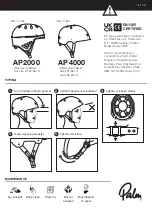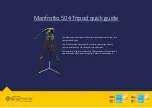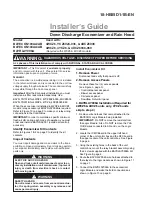
capaNCDT 6500
Page 34
Ethernet Interface
6.2
Data Format of Measuring Values
The measuring value is made up of 4 consecutive bytes:
MSB
LSB
Bit 1
Bit 2
Bit 3
Bit 4
Bit 5
Bit 6
Bit 7
Bit 8
1. Byte 1 (Start) Channel number ( 1 ... 8 ) Vz-Bit MSB
2. Byte
0
24-Bit Measuring value
LSB
3. Byte
0
4. Byte
0
Vz-Bit: (o = positive numbers, 1 = negative numbers at math functions)
Negative numbers are displayed in two‘s complement.
If a math function is active, the measured value on this channel reduces from 24 bit to
21 bit. The three upper bits now provide to display measured values, which exceed the
measuring range (For example if two measured values are added).
By default, the measurements are continuously output with the set data rate via the data
port. However, there is also a trigger mode which can be used to get the individual mea-
surements, see Chap.
5.5
.
6.3
Settings
Operating modes:
-
Continuous transmission with fixed data rate
-
Trigger mode (recall hardware trigger input or individual measurements, see Chap.
5.5
Data rate:
It is possible to adjust different data rates between 2.5 Sa and 7.8 kSa (resp. 3.9 kSa).
The data rate applies to all channels.
Filter/Measuring value averaging:
The following filters are selectable:
-
Moving average
-
Arithmetic average (only each n
th
value will be output)
-
Median
-
Dynamic Noise Rejection
The setting for the averaging applies to all channels.
Channel selection:
Only selected channels will be transmitted.
Linearization Options:
-
Offset correction
-
2-point-linearization
-
3-point-linearization
-
5-point-linearization
-
10-point-linearization
Up to 10 linearization points can be measured for each channel. These are at 10 %,
20 %, 30 %, 40 %, 50 %, 60 %, 70 %, 80 %, 90 % and 100 % of the measurement range.
That means, for example, that the sensor is adjusted to 10 % of the measurement range.
This linearization point (= actual measurement at this point) is then measured and a
correction curve is calculated so that the linearized measured value corresponds to the
target measurement value.
Only the measurement value at 10 % of the measurement range is used for the correc-
tion of the start of the measurement range.
The correction curve for the 2-point-linearization uses data points at 10 % and 90 % of
the measurement range.
Summary of Contents for capaNCDT 6500
Page 67: ......
















































